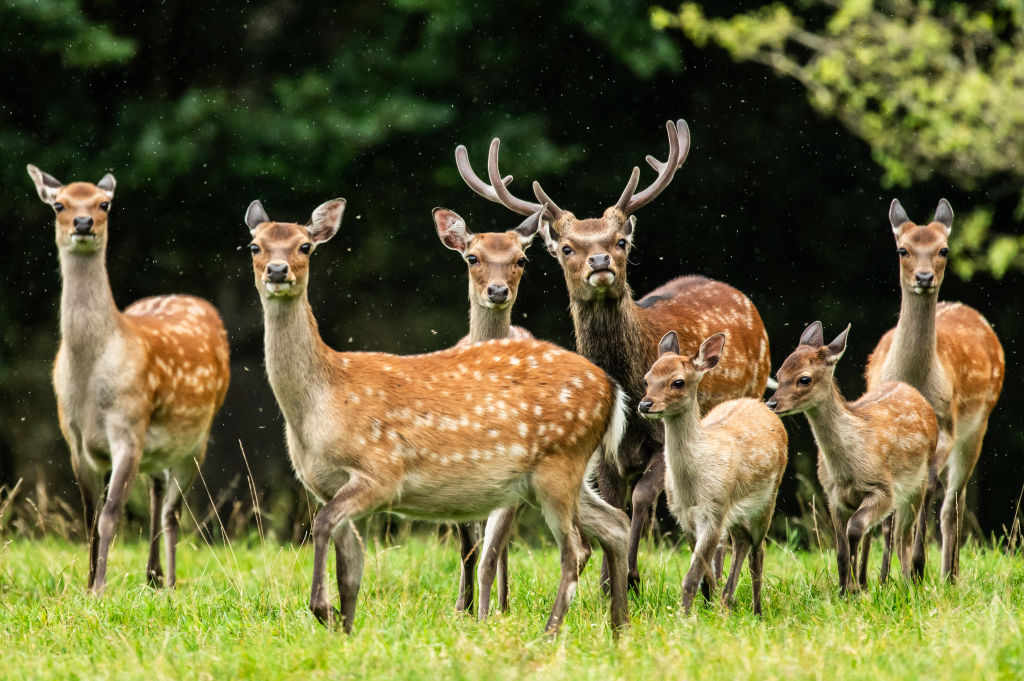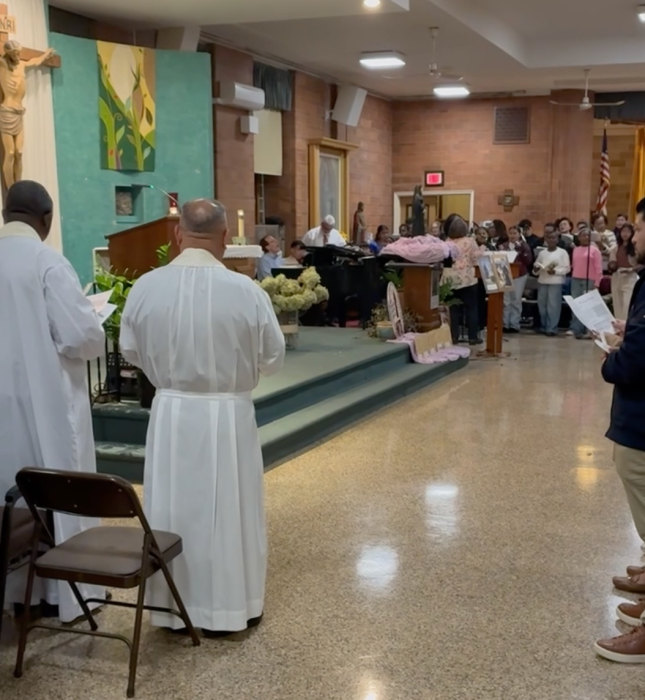A population of alien creatures, sika deer, an introduced deer species native to East Asia, has been quietly living in Southaven County Park on Long Island for many decades.
According to the Maryland DNR, you can distinguish sika deer from white-tail deer in several ways. Unlike white-tailed deer, sika deer have a large white rump patch, males have dark, shaggy manes running down their necks, and some individuals tend to keep their white spots as adults.
Sika deer or Cervus nippon are in the same genus as elk, meaning they are more closely related to that species than Long Island’s native white-tailed deer. According to the Maryland Department of Natural Resources (Maryland DNR), relatively large introduced sika deer populations exist in Maryland, Virginia, and Texas. However, the species is most associated with its native East Asia, especially Japan. The deer are a beloved fixture of Japanese culture and Shinto religion. Videos of the species delighting and terrorizing tourists at Japan’s famous Nara Park have also gone viral in recent years.
On the other hand, our small local sika deer population has flown under the radar. Little information about Long Island’s sika deer population is readily available online. Google searches for “Long Island sika deer” mainly turn up some bow-hunting forums, a handful of Reddit threads, and a few Facebook posts. Up to this point, media coverage of the population has been scant, though the population was mentioned in a 2003 Newsday article that is currently only accessible online via the Wayback Machine.
The popular citizen science app iNaturalist provides the most comprehensive collection of Long Island sika deer sightings. As of November 20, 2024, the animals have been recorded on Long Island via the app 26 times since November 30, 2017, with 25 of those observations being judged as “research grade” by app users. The majority of these observations were recorded within Southaven County Park, though a few were also reported to be beyond the park’s boundaries.
The New York State Department of Environmental Conservation (DEC) told Great South Bay News that the sika deer population was established when the land that is now Southaven County Park was the site of a hunting club. Known as The Suffolk Club in 1827, it operated here under several different owners and names from its formation until its takeover by the Hard family in the 1920s through the 1960s. The land was then sold to Suffolk County for the establishment of a public park. This timeline of events is detailed by a Mastics-Moriches-Shirley Community Library article and the 2003 Newsday article.
Sometime between the establishment of The Suffolk Club and the purchase of the land by the county, the sika deer were released on the property and became an established breeding population. Newsday also reported that the ancestors of the current sika deer population also spent time at the Bronx Zoo and a Shirley petting zoo before being adopted by the hunting club and eventually going feral.
The current state of this sika deer population and its potential ecological impact are unclear. The DEC says it “does not perform population counts of sika deer” in response to a question about their numbers. The 2003 Newsday article says that “the population has fluctuated between 20 and 50” since their introduction, but this reporting is over 20 years old and may not still be accurate today.
It is legal to hunt sika deer “in Suffolk County during the white-tailed deer seasons provided they are on property with legal hunting access,” according to the DEC. What impact hunting may have had on Long Island sika deer numbers has not been established.
Still, we know that at least some sika deer remain in the park because of recent iNaturalist observations so they are playing a role in the local ecosystem.
The DEC currently considers sika deer to be just an “introduced species” on Long Island rather than an ecologically damaging “invasive species,” but states that “if they were to expand their range beyond the park and compete with local white-tailed deer, they would be considered invasive.”
Concerns about sika deer spreading diseases to native white-tailed deer have led the DEC to target sika deer elsewhere in New York state. Public members are encouraged to contact the DEC if they spot sika deer outside Southaven County Park and its immediate vicinity.
Still, the DEC dismissed concerns about how few white-tail deer were reported on iNaturalist inside Southaven County Park compared to sika deer (21 sika sightings versus just two whitetail observations), saying “white-tailed deer are not confined to the park, and their resource needs can be met without competing with the sika deer interior to the park. It is likely folks are more inclined to report sika sightings as they are novel.”
The DEC redirected our additional questions about the local ecological impact of sika deer to the Suffolk County Parks Department. However, the local agency has not returned our calls for inquiry as of press time.
If hiking in Southaven County Park, you may just get lucky and catch a glimpse of these mysterious alien deer for yourself.





























